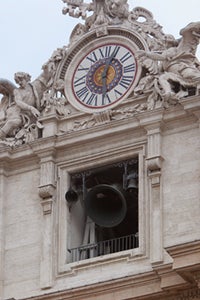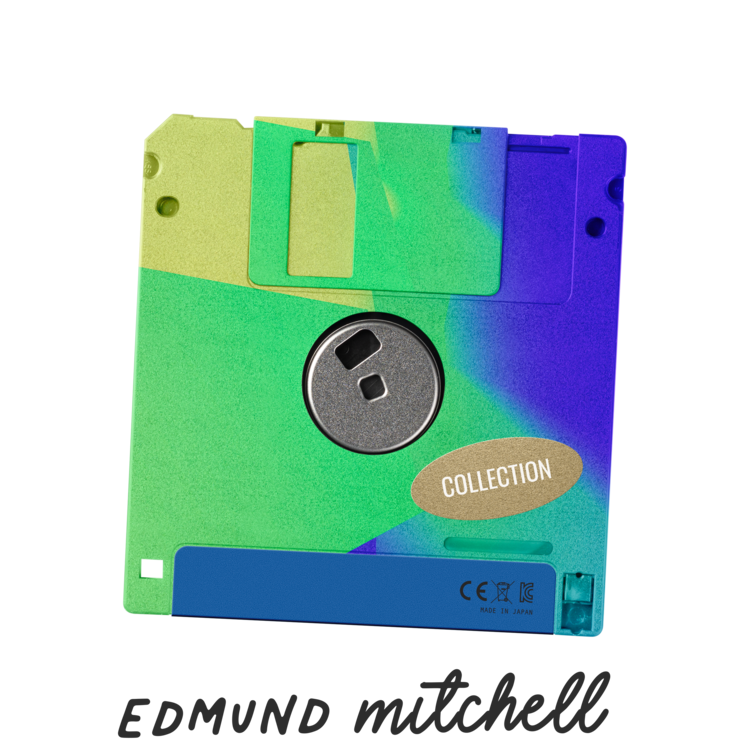 St. John of the Cross Statue by Magdeleine Weerts
St. John of the Cross Statue by Magdeleine Weerts
What should the rhythm of our personal prayer look like? Is prayer just one action, or a movement toward God with a beginning, middle, and end? The Church gives us an answer in the Catechism of the Catholic Church. This rhythm is akin to the Mass and can help us enter into prayer more easily and develop a habit of prayer that moves us towards God.
Personal Prayer and the Mass
If we look in the fourth pillar of the Catechism on prayer (remember, the Catechism is split into four pillars - Creed, Sacraments, Morality, and Prayer) especially the section on contemplative prayer, the Catechism makes the connection between contemplative prayer and the Mass:
"Entering into contemplative prayer is like entering into the Eucharistic liturgy" (paragraph 2711).

Remember, contemplative prayer is not something only reserved for Nuns or levitating Saints, contemplative prayer is nothing more than "a close sharing between friends" and "a gaze of faith, fixed on Jesus" meant for every Christian.
As we'll see in the Catechism, there are four movements to this rhythm of prayer:
GATHER, RECOLLECT, ABIDE, ENTER.
Let's unpack the rest of paragraph 2711 to find a rhythm of personal prayer and its connections to the Holy Sacrifice of the Mass.
GATHER

"Entering into contemplative prayer is like entering into the Eucharistic liturgy: we "gather up" the heart, recollect our whole being under the prompting of the Holy Spirit, abide in the dwelling place of the Lord which we are, awaken our faith in order to enter into the presence of him who awaits us." CCC 2711
__________________________________________________________________________
At the beginning of Mass, we begin with the sign of the Cross and with an opening prayer, called the Collect. Thus the beginning of Mass is a call to gather ourselves up from the world and reorientate ourselves in relation to Christ.
When I first walk into Mass, there are a thousand thoughts and distractions going through my head, as when I first begin to pray. At the beginning of prayer and the Mass, the first step is gathering our attention and thoughts and disengaging from the world around us (like Kevin Costner in that baseball movie...) so that we can place ourselves in the presence of God. Making the Sign of the Cross is a good way to begin prayer because it reminds us why we pray and to whom we pray.
St. Francis de Sales offers four ways of disengaging from the world and placing ourselves in the presence of God in the Introduction to the Devout Life:
1) Realizing God is omnipresent; that God is in everything and everywhere
2) Realizing God is in a very special manner in your heart and the depth of your spirit
3) Realizing God looks down on us from heaven, especially those in prayer
4) Imagining Jesus Christ in his humanity as though he were near us or next to us
RECOLLECT

"Entering into contemplative prayer is like entering into the Eucharistic liturgy: we "gather up" the heart, recollect our whole being under the prompting of the Holy Spirit, abide in the dwelling place of the Lord which we are, awaken our faith in order to enter into the presence of him who awaits us." CCC 2711
_________________________________________________________________________
At the beginning of Mass after the opening prayer is the Penitential Rite, where we acknowledge our sins and repent of them, followed by the Gloria praising God for his mercy and love.
Likewise the next phase of prayer means being honest with ourselves and with God about the state of our our soul and our heart. "We do not know how to pray as we ought" (Romans 8:26), but if we ask, the Holy Spirit teaches and guides us in prayer to acknowledge and relate to God truthfully who we are, where we have been, our thoughts, desires, baggage, and even our recent sins and shortcomings.
A few paragraphs back, the Catechism explains contemplative prayer in the words of St. Teresa: "Conteplative prayer in my opinion is nothing else than a close sharing between friends" (Catechism 2709). It's like answering the question "How ya' doing?" from a friend you haven't seen in awhile.
ABIDE

"Entering into contemplative prayer is like entering into the Eucharistic liturgy: we "gather up" the heart, recollect our whole being under the prompting of the Holy Spirit, abide in the dwelling place of the Lord which we are, awaken our faith in order to enter into the presence of him who awaits us." CCC 2711
__________________________________________________________________________
During Mass, we abide in the presence of God and listen to Him. We hear His voice in the Old Testament, His glory in the Psalms, and encounter Him in the flesh in the Gospels, all during the Liturgy of the Word.
After coming to God in prayer and talking to Him about what is honestly going on in our heart and in our lives, the conversation begins to turn over to God. Just like on the road to Emmaus (Luke 24:13-35), after we unload what is on our hearts we give God the opportunity to respond to us. This is when true contemplative prayer can begin.
In the following paragraphs of the Catechism, it explains that "contemplative prayer is hearing the Word of God." (Catechism 2716) In order for us to hear the Lord, we need to be patient and wait on Him (Psalm 27:14). I can't stress enough how important interior silence is for prayer. How can we hear God speak to us if we never shut up? Don't be afraid that you are doing nothing by sitting in silence this way. "Contemplation is a gaze of faith, fixed on Jesus." (Catechism 2715). As long as you are focused on God, you are praying. Sometimes God speaks words to your heart, sometimes He sends you peace, sometimes He may just be present with you in that moment, pouring out His love on you.
ENTER

"Entering into contemplative prayer is like entering into the Eucharistic liturgy: we "gather up" the heart, recollect our whole being under the prompting of the Holy Spirit, abide in the dwelling place of the Lord which we are, awaken our faith in order to enter into the presence of him who awaits us." CCC 2711
__________________________________________________________________________
The most intimate moment of Mass happens when we receive our Lord in the Eucharist and come into communion with our God.
Contemplative prayer is a gift beyond words. Initiated by God, we become caught up in the life of the Trinity and are led to share in the love between the Father and the Son. There is no way to make this happen, we must abide in God's presence and wait for Him to bring us into communion with Him. But when this gift does occur, when God allows us to enter into His mystery and experience a foretaste of heaven, it is like an blaze of faith, hope, and love being ignited in your chest!
It's That Easy! (Sort of)
Prayer is hard work, especially contemplative prayer. Remember, God is the one who initiates contemplative prayer, it is a gift and we can only patiently wait with a loving gaze fixed on Him. Realize that it will be hard at the beginning, but if we put in even the smallest effort to reach out to God in love, God graciously reward us. Set up a time to regularly practice praying in this way everyday and you will begin to experience the deep love, joy, and peace of a life in intimate relationship with God.
A Rhythm of Prayer from Catechism 2711
"Entering into contemplative prayer is like entering into the Eucharistic liturgy: we "GATHER up" the heart, RECOLLECT our whole being under the prompting of the Holy Spirit, ABIDE in the dwelling place of the Lord which we are, awaken our faith in order to ENTER into the presence of him who awaits us. We let our masks fall and turn our hearts back to the Lord who loves us, so as to hand ourselves over to him as an offering to be purified and transformed."
+JMJ
###What do you think? Was this helpful? Let me know in the comment box. God Bless!




 St. John of the Cross Statue by Magdeleine Weerts
St. John of the Cross Statue by Magdeleine Weerts




